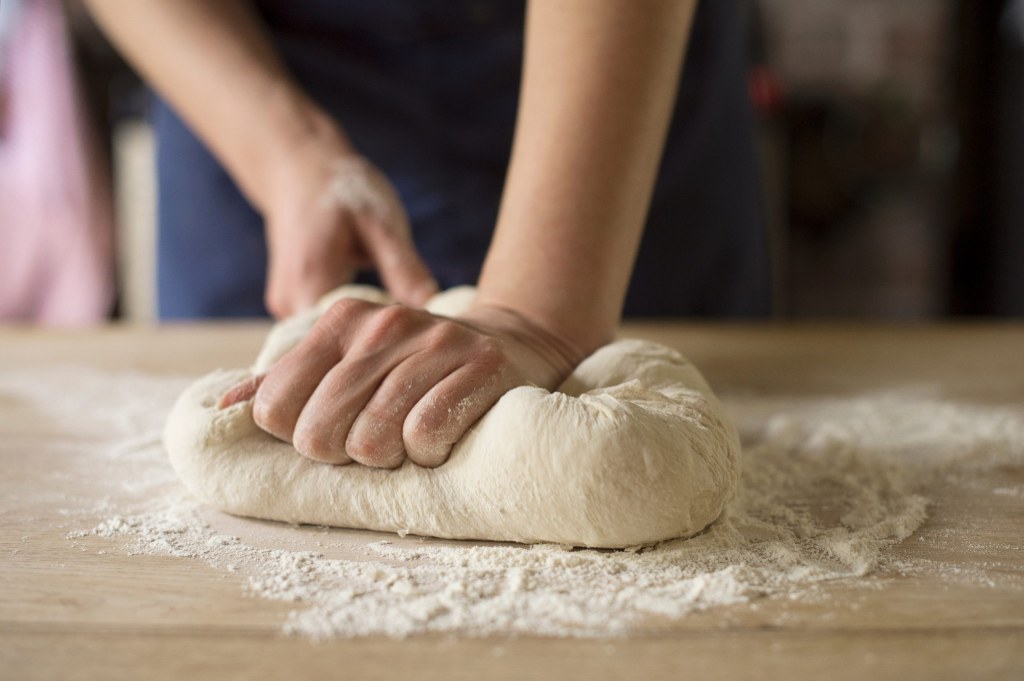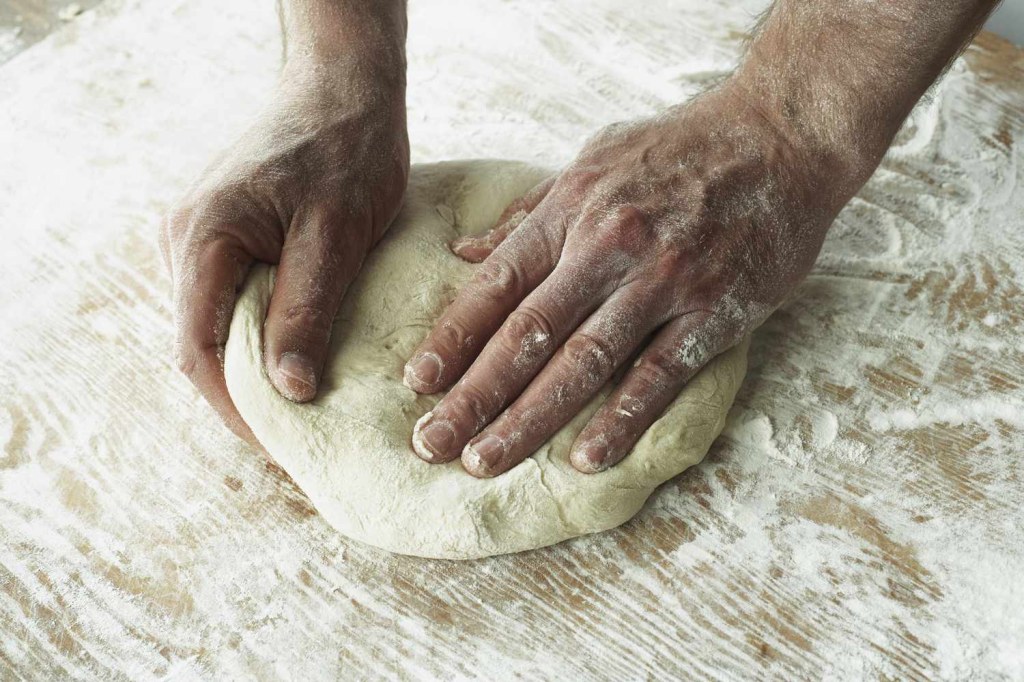Cooking Techniques Kneading: Mastering the Art of Dough
Introduction
Hello, readers! Welcome to a delightful journey into the world of cooking techniques. In this article, we will explore the art of kneading, a fundamental skill in the realm of dough-making. Whether you are a professional chef or a passionate home cook, mastering the technique of kneading will elevate your culinary creations to new heights. So, roll up your sleeves and get ready to dive into the wonderful world of kneading!
Kneading is a process that involves working and manipulating dough to develop gluten, which gives bread its structure and elasticity. It is a crucial step in bread-making, pizza dough preparation, and various pastry recipes. By understanding the principles and techniques behind kneading, you will be able to create perfectly textured bread, fluffy cakes, and delectable pastries.

Image Source: immediate.co.uk
In this article, we will take a closer look at the what, who, when, where, why, and how of kneading. We will also explore the advantages and disadvantages of this technique and provide answers to frequently asked questions. By the end of this article, you will have a comprehensive understanding of kneading and be ready to embark on your dough-making adventures.
Now, let’s dive into the world of kneading and unlock the secrets to creating irresistible baked goods!
What is Kneading?
🧆 Kneading is the process of working dough, typically made from flour, water, and yeast, to develop gluten and achieve the desired texture in baked goods. It involves a repeated motion of pressing, folding, and stretching the dough to activate the gluten strands.

Image Source: thespruceeats.com
Gluten, a protein composite, provides elasticity and structure to dough. When kneading, the gluten proteins align and form a network, creating a stretchy and resilient dough.
It is important to note that not all dough requires kneading. Some recipes, such as biscuits or scones, call for minimal handling to avoid developing too much gluten, resulting in a tender and crumbly texture.
Who Can Benefit from Kneading?
👨🍳 Kneading is a skill that benefits both professional chefs and passionate home cooks. If you love baking bread, making homemade pasta, or experimenting with various dough-based recipes, mastering the art of kneading will significantly enhance your culinary creations.
Even if you are new to the world of baking, learning to knead dough will empower you to create delicious and impressive baked goods. With practice, you will develop a feel for the dough’s texture and understand how to achieve the desired consistency.
Whether you aspire to open your own bakery or simply want to impress your friends and family with homemade delights, kneading is an essential technique to add to your culinary repertoire.
When and Where to Use Kneading?
📅 Kneading is primarily used in recipes that require gluten development, such as bread, pizza dough, and certain pastry recipes. It is a crucial step to ensure proper texture and structure in these baked goods.
Additionally, kneading is often employed when incorporating ingredients into a dough. By kneading, you can evenly distribute fats, spices, and other flavors throughout the dough, resulting in a harmonious blend of ingredients.
As for the location, kneading can be done in any clean and spacious area of your kitchen. A flat, sturdy surface, such as a countertop or a large cutting board, is ideal for kneading dough. Make sure you have enough space to comfortably work and manipulate the dough.
Why is Kneading Important?
❓ Kneading plays a crucial role in creating the desired texture and structure in baked goods. Here are some key reasons why kneading is important:
1. Gluten Development: Kneading activates the gluten proteins in the dough, allowing them to form a strong network. This network provides structure and elasticity, resulting in a well-risen and chewy finished product.
2. Improved Texture: Properly kneaded dough has a uniform texture, free from lumps or dry pockets. This ensures even baking and a consistent texture throughout the baked goods.
3. Enhanced Flavor: Kneading helps distribute flavors evenly throughout the dough, ensuring a harmonious blend of ingredients in the final product.
4. Increased Shelf Life: Well-kneaded dough tends to have a longer shelf life, as the gluten structure helps retain moisture and prevent staling.
How to Knead Dough?
🥖 Now that we understand the importance of kneading, let’s explore the step-by-step process of kneading dough:
1. Start with a clean, flat surface: Lightly flour your work surface to prevent the dough from sticking.
2. Gather the dough: Place the dough on the floured surface and gather it into a rough ball shape.
3. Press and fold: Push the dough away from you using the heel of your hand. Fold it in half, rotate it 90 degrees, and repeat. This motion helps evenly distribute the ingredients and activate the gluten.
4. Stretch and fold: Using the heel of your hand, stretch the dough away from you. Fold it back onto itself and rotate it. Repeat this motion, adding more flour if necessary, until the dough becomes smooth and elastic.
5. Test for readiness: To check if the dough is properly kneaded, perform the windowpane test. Gently stretch a small piece of dough. If it stretches without tearing and becomes thin enough to see through, it is ready.
6. Rest the dough: Once the dough is properly kneaded, shape it into a ball and let it rest for a specified time, as mentioned in your recipe. This allows the gluten to relax and the dough to rise.
Remember, practice makes perfect when it comes to kneading. With time, you will develop a feel for the dough’s texture and understand the nuances of each recipe.
Advantages and Disadvantages of Kneading
✅ Advantages:
1. Improved Texture: Kneading develops gluten and creates a uniform texture in the dough, resulting in a desirable chewy and elastic texture in baked goods.
2. Enhanced Flavor: Through kneading, flavors are evenly distributed, ensuring a harmonious blend of ingredients throughout the dough.
3. Increased Shelf Life: Properly kneaded dough tends to have a longer shelf life, as the gluten structure helps retain moisture and prevent staling.
❌ Disadvantages:
1. Over-kneading: Excessive kneading can lead to the development of too much gluten, resulting in a dense and tough texture in baked goods.
2. Time and Effort: Kneading can be a time-consuming and physically demanding process, especially when working with larger batches of dough.
3. Not Suitable for All Recipes: Not all recipes require kneading. Delicate pastries and certain types of quick breads benefit from minimal handling to maintain a tender and light texture.
Frequently Asked Questions (FAQ)
🌟 FAQ 1: Can I use a stand mixer or a food processor for kneading dough?
Answer: Yes! A stand mixer or a food processor equipped with a dough hook attachment can be used to knead dough. These appliances can save time and physical effort, especially when working with larger batches of dough. However, hand kneading offers more control and allows you to develop a better feel for the dough.
🌟 FAQ 2: How do I know if I’ve kneaded the dough enough?
Answer: The windowpane test is a reliable way to determine if the dough is properly kneaded. Gently stretch a small piece of dough. If it stretches without tearing and becomes thin enough to see through, it is ready. Additionally, the dough should feel smooth, elastic, and slightly tacky to the touch.
🌟 FAQ 3: Can I knead gluten-free dough?
Answer: Kneading is not necessary for gluten-free dough, as there is no gluten to develop. However, some gluten-free bread recipes may benefit from a short mixing or folding step to incorporate the ingredients and create a cohesive dough.
🌟 FAQ 4: Can I knead dough in advance and refrigerate it?
Answer: Yes! You can knead dough in advance, place it in a lightly oiled bowl, cover it tightly with plastic wrap, and refrigerate it. This method, known as retarding, allows for a slow fermentation process, resulting in enhanced flavor development. Just remember to let the dough come to room temperature before shaping and baking.
🌟 FAQ 5: What should I do if the dough is too sticky or too dry while kneading?
Answer: If the dough is too sticky, gradually add small amounts of flour while kneading until it reaches the desired consistency. If the dough is too dry, lightly moisten your hands and continue kneading. Adjustments may vary depending on the recipe and environmental conditions.
Conclusion
In conclusion, kneading is a fundamental technique that unlocks the full potential of dough. It allows you to create light and airy bread, tender pastries, and delectable pizza crusts. By understanding the principles and techniques of kneading, you can take your baking skills to new heights.
Remember, practice and experimentation are key to mastering the art of kneading. With each batch of dough, you will refine your technique and develop an intuitive understanding of the dough’s needs.
So, gather your ingredients, roll up your sleeves, and embrace the joy of kneading. The world of dough awaits, ready to reward you with delicious creations that will delight the senses and bring smiles to those around you.
Final Remarks
Thank you for joining us on this flavorful journey into the world of cooking techniques kneading. We hope this article has provided valuable insights and inspiration for your culinary adventures. Remember to always follow recipe instructions and adapt kneading techniques based on your specific needs and preferences.
While kneading can be a physically demanding process, the rewards are well worth the effort. The satisfaction of seeing your dough transform into perfectly textured bread or mouthwatering pastries is unparalleled.
Now, armed with knowledge and passion, go forth and knead with confidence. Let your creativity soar and your taste buds rejoice. Happy kneading, friends!